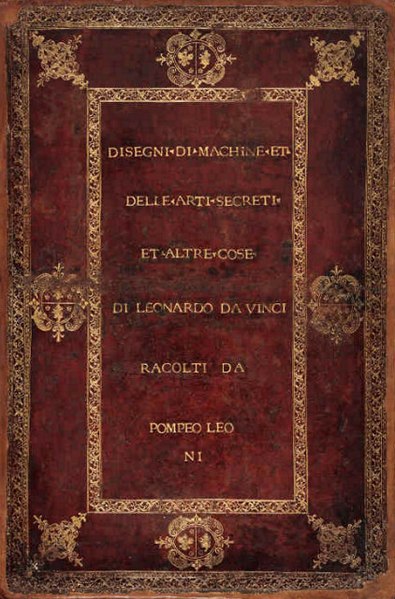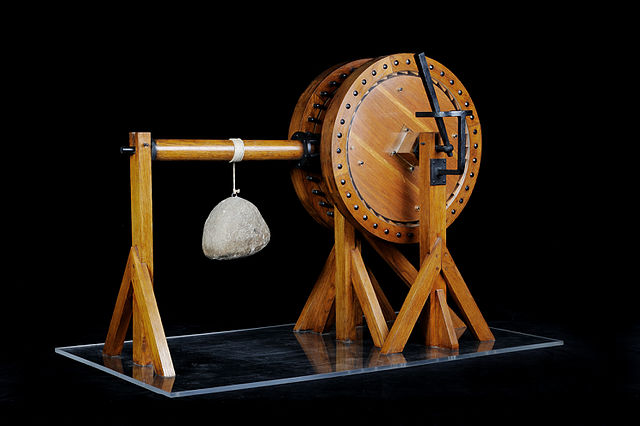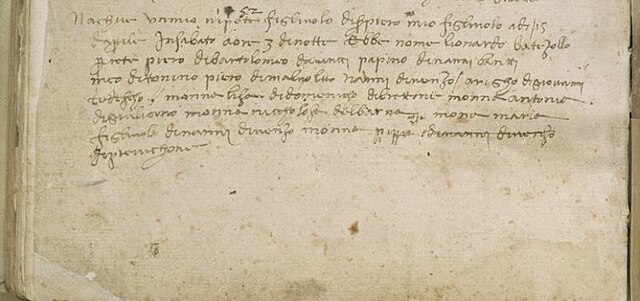The Codex Atlanticus is a 12-volume, bound set of drawings and writings by Leonardo da Vinci, the largest single set. Its name indicates the large paper used to preserve original Leonardo notebook pages, which was used for atlases. It comprises 1,119 leaves dating from 1478 to 1519, the contents covering a great variety of subjects, from flight to weaponry to musical instruments and from mathematics to botany. This codex was gathered in the late 16th century by the sculptor Pompeo Leoni, who dismembered some of Leonardo's notebooks in its formation. It is now in the Biblioteca Ambrosiana in Milan.
Codex Atlanticus
Hoist by Leonardo da Vinci (Codex Atlanticus, f. 30v., 1480 ca.). Reconstruction at the Museo nazionale della scienza e della tecnologia Leonardo da Vinci, Milan.
Design for a giant crossbow
Waterwheels and Archimedean screws
Leonardo di ser Piero da Vinci was an Italian polymath of the High Renaissance who was active as a painter, draughtsman, engineer, scientist, theorist, sculptor, and architect. While his fame initially rested on his achievements as a painter, he has also become known for his notebooks, in which he made drawings and notes on a variety of subjects, including anatomy, astronomy, botany, cartography, painting, and paleontology. Leonardo is widely regarded to have been a genius who epitomized the Renaissance humanist ideal, and his collective works comprise a contribution to later generations of artists matched only by that of his younger contemporary Michelangelo.
Leonardo Da Vinci's baptism record
The possible birthplace and childhood home of Leonardo in Anchiano, Vinci, Italy
The Baptism of Christ (1472–1475) by Verrocchio and Leonardo, Uffizi Gallery
Adoration of the Magi c. 1478–1482, Uffizi, Florence








